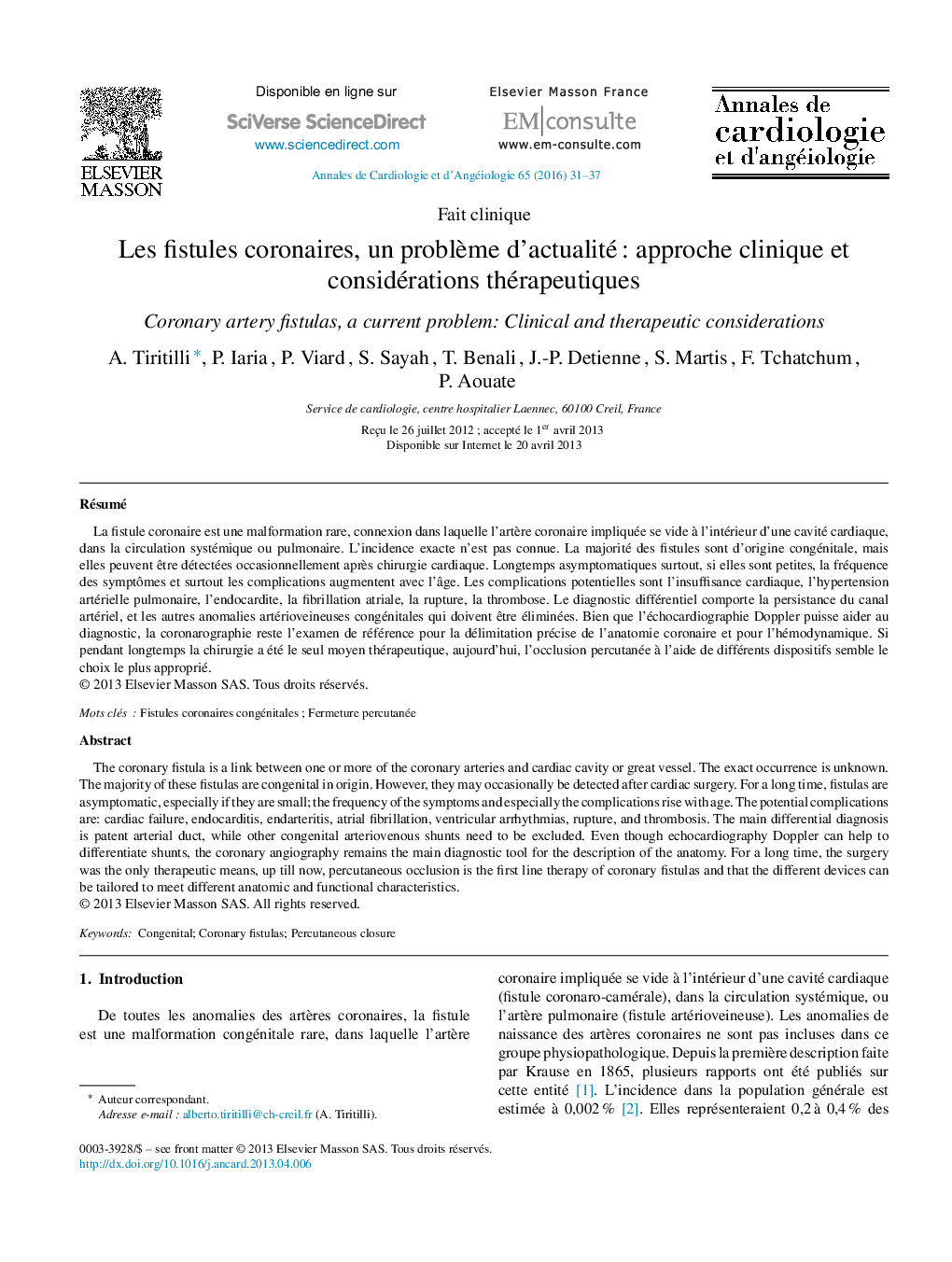| Article ID | Journal | Published Year | Pages | File Type |
|---|---|---|---|---|
| 2868509 | Annales de Cardiologie et d'Angéiologie | 2016 | 7 Pages |
RésuméLa fistule coronaire est une malformation rare, connexion dans laquelle l’artère coronaire impliquée se vide à l’intérieur d’une cavité cardiaque, dans la circulation systémique ou pulmonaire. L’incidence exacte n’est pas connue. La majorité des fistules sont d’origine congénitale, mais elles peuvent être détectées occasionnellement après chirurgie cardiaque. Longtemps asymptomatiques surtout, si elles sont petites, la fréquence des symptômes et surtout les complications augmentent avec l’âge. Les complications potentielles sont l’insuffisance cardiaque, l’hypertension artérielle pulmonaire, l’endocardite, la fibrillation atriale, la rupture, la thrombose. Le diagnostic différentiel comporte la persistance du canal artériel, et les autres anomalies artérioveineuses congénitales qui doivent être éliminées. Bien que l’échocardiographie Doppler puisse aider au diagnostic, la coronarographie reste l’examen de référence pour la délimitation précise de l’anatomie coronaire et pour l’hémodynamique. Si pendant longtemps la chirurgie a été le seul moyen thérapeutique, aujourd’hui, l’occlusion percutanée à l’aide de différents dispositifs semble le choix le plus approprié.
The coronary fistula is a link between one or more of the coronary arteries and cardiac cavity or great vessel. The exact occurrence is unknown. The majority of these fistulas are congenital in origin. However, they may occasionally be detected after cardiac surgery. For a long time, fistulas are asymptomatic, especially if they are small; the frequency of the symptoms and especially the complications rise with age. The potential complications are: cardiac failure, endocarditis, endarteritis, atrial fibrillation, ventricular arrhythmias, rupture, and thrombosis. The main differential diagnosis is patent arterial duct, while other congenital arteriovenous shunts need to be excluded. Even though echocardiography Doppler can help to differentiate shunts, the coronary angiography remains the main diagnostic tool for the description of the anatomy. For a long time, the surgery was the only therapeutic means, up till now, percutaneous occlusion is the first line therapy of coronary fistulas and that the different devices can be tailored to meet different anatomic and functional characteristics.
